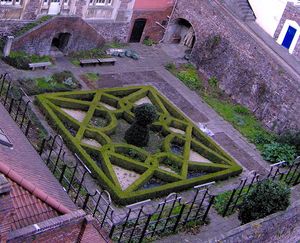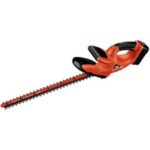English knot gardens originated in Britain during the 17th century. The purpose of a knot garden is to provide garden viewers with eye-pleasing geometric designs which can be enjoyed at ground level, or perhaps, a second story window.
According to Garden Museum, many plants were traditionally used in these gardens, most notably, the Buxus sempervirens, (more commonly known as European Box or boxwood), as the hedge that makes up the knots and lines of the garden. Other plants commonly used in knot gardens are endless varieties of roses, tulips, yellow asphodel, dittany, foxgloves, and larkspur. Herbs, such as rosemary and lavender, were also used to diversify these gardens with both color and scent.
Planting a traditional English knot garden is no easy feat as these gardens can require quite a bit of patience and maintenance. As a beginner, it is wise to start your garden with planning the design on grid paper. (Hint: There are many knitting websites with online chart makers that you can use to design and print your geometric plan.) Many gardening websites feature pictures of beautiful knot gardens to help provide you with inspiration. Take time to sketch both the design you would like to achieve as well as where you will plant your various plants. Then prepare a 5′ by 5′ bed as appropriate for the plants you have chosen. Consulting a local nursery is wise to ensure the plants you have selected are appropriate for the climate you live in.
If you have chosen a centerpiece for your knot garden, be sure to install it first and then begin planting from the middle of the bed outward. This will allow you to make adjustments as needed to keep the garden looking symmetrical and will prevent plants from being trodden on. As a finishing touch, considering framing your to make the edges appear neat and tidy. An inexpensive method is using bricks lined up end to end to provide framing.
As mentioned, growing a proper knot garden takes patience. In order to have the hedges grow thick and full all the way around, you may find it necessary to pinch back new growth during the first year or so. This method is proven for encouraging even growth. During this time it may not be necessary to trim the hedges with exact precision so feel free to “eye ball” it.
When you feel the hedges are in need of a more precise trim, it is best to use good quality tools of the trade. You will need a pair of pruning shears and hedge shears. There are many ways to trim hedges to perfect and it may require some experimentation for you to find the best method for you. If you need help getting started, read this article.
While English knot gardens are known for precision and beauty, have fun with this project and feel free to use whatever herbs, flowers, trees and focal pieces that speak to you.




